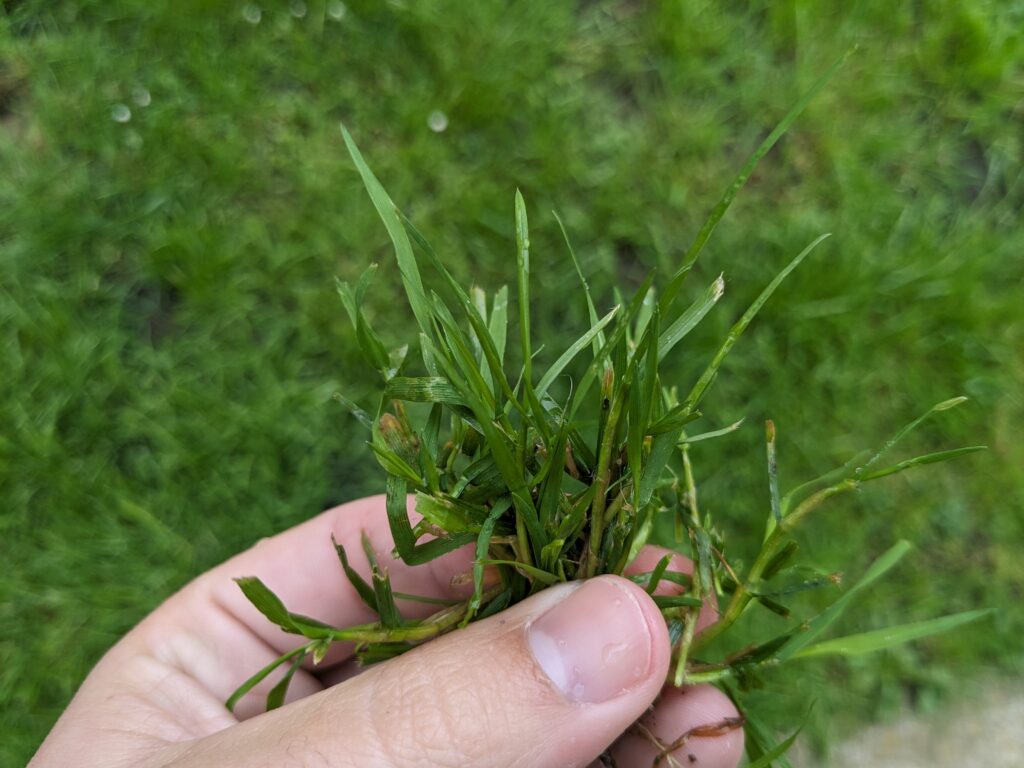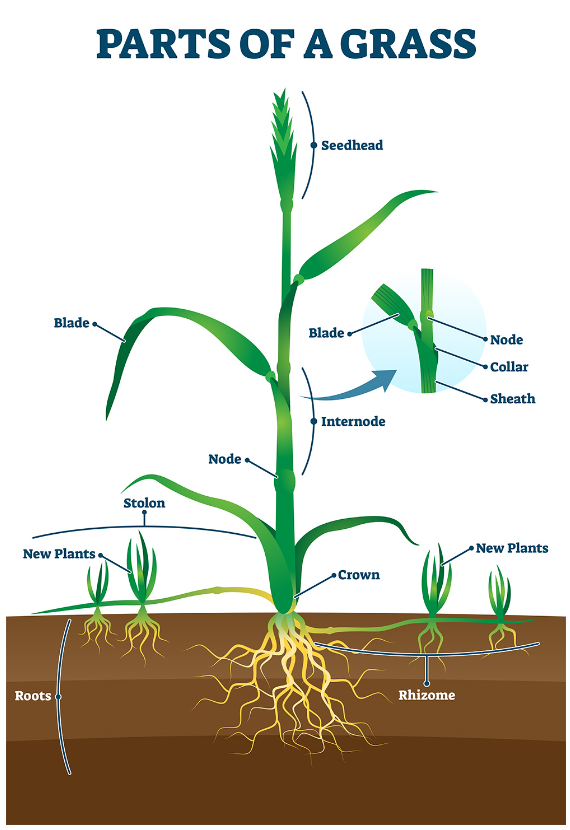To the human eye, grass leaves in general look pretty much the same. However, under a microscope is where the differences become apparent, especially between warm and cool season grasses. Leaves of warm season grasses have thick walls around the vascular cells.

Leaves of warm season grasses have thick walls around the vascular cells. These ‘walls’ are known as bundle sheath, and are absent from cool season grasses. The cells in these walls are packed with chloroplasts, mitochondria and other organelles to ensure that their overall rate of photosynthesis is rapid. In warm season grasses, C4 compounds are passed quickly though these cells where they release CO2. This CO2 is then utilized just as it is in the cool season grasses, and the products can be shunted directly into the vascular cells for transport to the parts of the plant where they are needed for growth.
At the base of the plant is a region of nodes with tightly packed internodes, known as the crown. The crown is the centre of all activity for grass. Roots grow down while leaves grow upwards towards sunlight. Grass is very unique as a plant in its own right, as the leaves of a grass plant actually grow from the crown, causing it to grow from the bottom up. When a grass blade is cut, it will heal but never grows from the top. You can tell old leaves from new, not just by their maturity, but also if the tip has a natural point or has a flat healed wound due to growing from the crown. Another way to tell is the older leaves will always be on the outside of the stem.
So what does a leaf actually consist of?
A leaf is the lateral outgrowth of a stem. It consists of a flattened upper blade and a lower basal sheath that encircles the stem. The main structure of a leaf is chlorophyll, the green pigment involved in light energy capture for photosynthesis. As the plant develops, the shoot becomes more obvious, with the oldest leaves on the outside and the youngest ones forming in the centre and pushing upwards until they emerge. As the plant develops the leaves will show variations in structure and colour, which allows us to identify the grass.
Here’s an example of this identification process. Auricles: short, often claw-like appendages at the base of the leaf blade which tend to clasp the sheath at the culm internode. The various shapes can be useful for identifying certain grasses.
Auricles may be entirely absent in bluegrass, short and blunt in tall fescues or long and pointed in annual ryegrass.
Something to remember is grass blades are often flat; however, they can also be rolled. Some tropical grasses have very stiff leaves which are referred to as needle-like or acicular.

